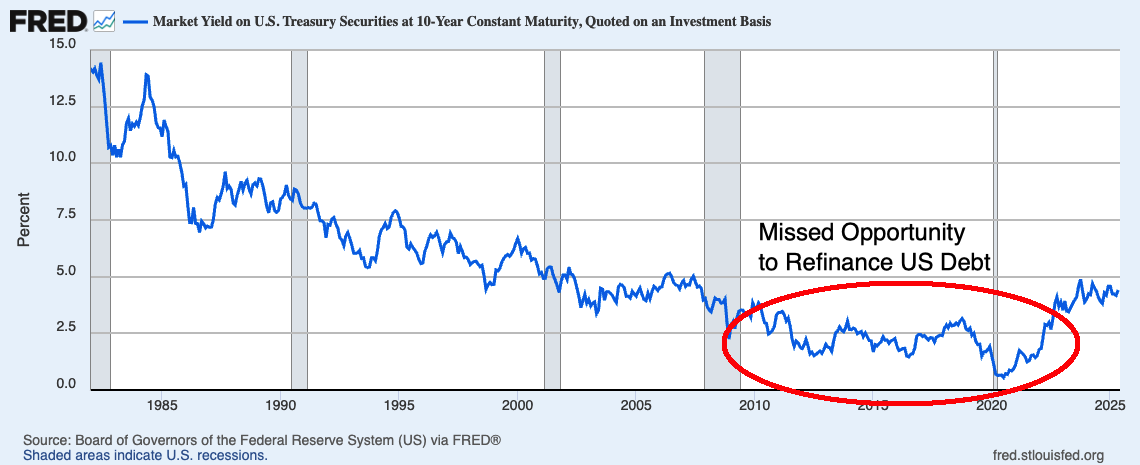Social Security: 5 Filing Strategies for Spouses
When it comes to Social Security, you have many choices about when to claim benefits for the first time. You have even more choices if you are married. That’s because you and your spouse can coordinate with the goal of maximizing your combined lifetime income. There are a number of common filing strategies that you […] The post Social Security: 5 Filing Strategies for Spouses appeared first on 24/7 Wall St..

Key Points
-
Married couples have a variety of different Social Security claiming strategies.
-
Couples need to consider their retirement goals and health status.
-
Both survivor and spousal benefits should be considered when deciding when to claim benefits.
-
Are you ahead, or behind on retirement? SmartAsset’s free tool can match you with a financial advisor in minutes to help you answer that today. Each advisor has been carefully vetted, and must act in your best interests. Don’t waste another minute; get started by clicking here.(Sponsor)
When it comes to Social Security, you have many choices about when to claim benefits for the first time. You have even more choices if you are married. That’s because you and your spouse can coordinate with the goal of maximizing your combined lifetime income.
There are a number of common filing strategies that you can consider, with the right one dependent on many factors, including how much you and your spouse have earned over your lifetime, as well as your desired retirement age and your ability to fund retirement without Social Security coming in.
Here are five potential strategies to think about, along with some tips on when you may want to use each one.
1. Both spouses claim at 70
If both you and your spouse want to maximize the size of your monthly Social Security checks, you could both delay your benefits claim until 70. Studies have shown that 70 is the optimum claiming age for 7 in 10 retirees because the benefits program was designed at a time when lifespans were shorter.
A system of early filing penalties and delayed retirement credits was put in place at the time to try to equalize out lifetime benefits for early vs late claimers, but when you outlive the projected life span, the delayed claim pays off since you get higher monthly checks for more years than anticipated once you eventually start getting payments.
Of course, this approach either requires you to work until 70 or to have enough savings to support you without Social Security until then. If that’s the case in your situation, this may be the best approach.
2. Both spouses claim at 62
In some situations, both spouses decide to claim at 62, which is the earliest age benefits become available. This strategy isn’t an optimal one in terms of maximizing lifetime benefits. That’s because it’s usually best if at least one spouse delays to grow the size of their payments. This could also result in lower survivor benefits as well. When the first spouse dies, the surviving spouse gets to keep the higher of the two checks, so waiting to improve at least one benefit can be helpful for the surviving spouse to make ends meet.
However, there are times when both spouses are in poor health and don’t expect to live long, or when early retirement is important to a couple and is possible only with two Social Security checks coming into the home. In these situations, both spouses claiming at 62 may make sense because neither spouse may live long enough to make up for forgone benefits due to delay — or because the couple may be willing to accept lower lifetime benefits to make their early retirement dreams happen.
3. A 62/70 split
Married couples could also optimize their lifetime benefits with a 62/70 split. This is an optimum claiming strategy in situations where one spouse out-earns the other.
The lower-earning spouse can claim at a younger age to start getting some Social Security money coming in. The higher earner could delay to maximize the larger lifetime benefit. This would maximize survivor benefits as well, since the higher benefit would grow to the maximum size, leaving the last surviving spouse with much more money to live on.
4. An early claim followed by a switch to spousal benefits
If there is a big earning disparity between the spouses, then one great strategy is for the lower-earning spouse to claim their retirement benefits first while the higher earner delays their own retirement benefits claim.
The lower earner will accept a reduction in their retirement checks by claiming at a younger age. However, when the higher earner starts getting their retirement benefits, this opens up the door for the lower earner to claim spousal benefits. Let’s say, for example, that the wife earned less. She could claim her retirement benefits while her husband waits. After her husband finally claims, the wife becomes eligible for spousal benefits on his record. They’d be worth up to 50% of his primary insurance amount.
This is a twist on the 62/70 split that works when there is a big enough earning discrepancy between the spouses that the wife’s spousal benefits would be higher than the amount of her own retirement checks.
5. An early claim to open up the door to early spousal benefits

Finally, another potential strategy is for the higher-earning spouse to claim benefits at a younger age to open up the door to spousal benefits.
Since spousal benefits cannot be claimed until the primary earner gets retirement benefits, a spouse who doesn’t qualify based on their own work record would get no benefits at all until their spouse starts retirement checks. In this case, even though it would lower survivor benefits and lower the monthly benefits of the higher earner, it may make sense for the higher earner to claim as soon as their spouse is ready to start spousal benefits so the couple can begin getting two checks into the household instead of one.
Since there are so many different options, it’s often best for married couples to work with a financial advisor to determine what strategy makes the most sense. An advisor can consider all the details and help couples make the choice that gives them the best chance of the retirement security they deserve.
The post Social Security: 5 Filing Strategies for Spouses appeared first on 24/7 Wall St..






















































































































































































